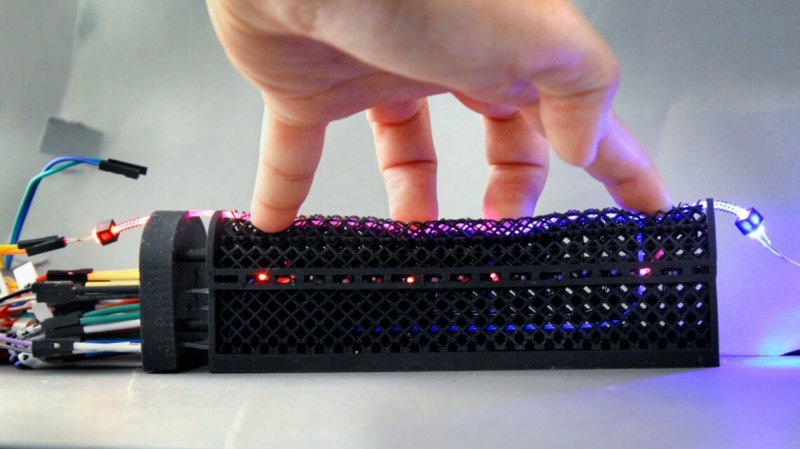This month, a team led by Dr. Rob Shepard at Cornell University [gave robots an artificial nervous system], with a seriously clever twist. Rather than mimicking the electric signals in our nervous system, his team turned to light. By embedding optical fibers inside a 3D printed stretchable material, the team engineered an “optical lace” that can detect changes in pressure less than a fraction of a pound.
…
The invention isn’t just an artificial skin. Instead, the delicate fibers can be distributed both inside a robot and on its surface, giving it both a sense of tactile touch and—most importantly—an idea of its own body position in space. Optical lace isn’t a superficial coating of mechanical sensors; it’s an entire platform that may finally endow robots with nerve-like networks throughout the body.
Eventually, engineers hope to use this fleshy, washable material to coat the sharp, cold metal interior of current robots, transforming C-3PO more into the human-like hosts of Westworld. Robots with a “bodily” sense could act as better caretakers for the elderly, said Shepard, because they can assist fragile people without inadvertently bruising or otherwise harming them.
Read full, original post: This Light-based Nervous System Helps Robots ‘Feel’































